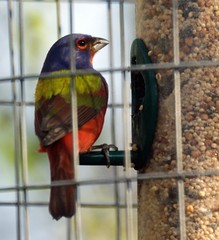Birds of Harbour Island, Bahamas

One doesn't go to Harbour Island in the Bahamas for birding. We went to avoid the cold, celebrate a birthday, walk along a stunning pink sand beach, listen to the gently rolling waves, and gaze into the turquoise ocean under a blue sky. However, just before we left, we discovered that our destination, the Pink Sands Hotel, is a bird sanctuary recognized by the Audubon Society. The hotel actually doesn't market itself as a birder's choice, does not go out of its way to attract birds, and no staff seemed overly knowledgeable about the birds. However, there are a good number of trees on the landscaped grounds, and we saw many warblers. The quantity wasn't great, but there were a wide variety of bird species. We even saw a Cape May warbler, a bird that has eluded us in Cape May.


Prairie Warbler

Cape May Warbler

Yellow throated Warbler


Northern Parula

Palm Warbler

American Redstart (Female)

Ovenbird

Bahama Woodstar

Female Painted Bunting
We also saw a black and white warbler, a black throated blue warbler, a yellow rumped warbler, some catbirds and a few tropical mockingbirds but didn't photograph them all.
Labels: Bahama Woodstar, Cape May Warbler, Caribbean, Harbour Island Birding, Northern Parula, Ovenbird, Painted Bunting, Palm Warbler, Prairie Warbler






